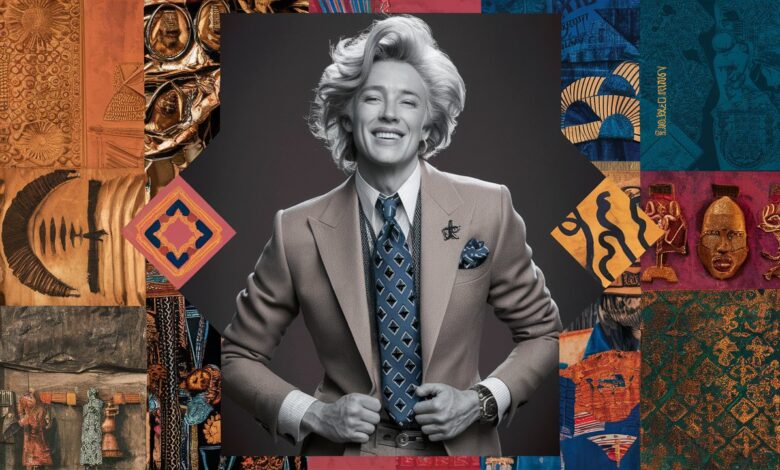
Introduction: The Timeless Appeal of Rakish Charm
The term “rakish” evokes images of effortless style, devil-may-care confidence, and a magnetic charisma that defies convention. Rooted in 18th-century literature and fashion, the word originally described a man who lived with a carefree, even rebellious flair—think tilted hats, unbuttoned coats, and a twinkle of mischief in the eye. Today, “rakish” transcends its historical context to symbolize a broader cultural fascination with individuality and nonconformity. This article delves into the essence of rakishness, its evolution, and why it continues to captivate imaginations across generations. From fashion to personality traits, we’ll unpack how the rakish archetype blends audacity with elegance—and why it remains a symbol of timeless allure.
1. Defining Rakish: A Term Steeped in History and Rebellion
The word “rakish” originates from the noun “rake,” short for “rakehell,” a term used in Restoration-era England to describe libertines who rejected societal norms. These figures were often aristocratic men who prioritized pleasure, adventure, and sartorial boldness over decorum. Over time, “rakish” softened from its scandalous origins to become synonymous with a refined yet rebellious aesthetic. Modern dictionaries define it as “dashingly stylish or smart,” but the term carries an undercurrent of daring—a willingness to flirt with impropriety while maintaining an air of sophistication. This duality makes rakishness more than just a style; it’s a philosophy of living boldly without apology.
2. The Anatomy of Rakish Style: Fashion as a Statement
Rakish fashion is a masterclass in balancing polish with spontaneity. Think of a tailored suit worn with a casually loosened tie, a fedora tilted at a jaunty angle, or a pocket square peeking out with a wink of color. The rakish wardrobe thrives on contrasts: structured silhouettes paired with disheveled details, luxurious fabrics mixed with rugged textures, and classic pieces subverted by unexpected accessories. This style isn’t about perfection—it’s about personality. A rakish individual might layer a vintage military jacket over a crisp shirt or pair polished brogues with slightly rumpled trousers. The goal is to project confidence without rigidity, suggesting a life lived with gusto and a refusal to be confined by trends.

3. Rakish Icons in Literature and Pop Culture
From literary antiheroes to silver-screen legends, rakish characters have long been cultural touchstones. Consider Jay Gatsby, whose tailored suits and mysterious past epitomize rakish allure, or James Dean’s rebel-without-a-cause persona, blending vulnerability with defiance. In film, actors like Errol Flynn and Johnny Depp have embodied rakish charm through roles that mix wit, recklessness, and a hint of danger. Even animated characters like Disney’s Captain Jack Sparrow—with his slurred speech and disheveled bravado—capture the essence of rakishness. These figures resonate because they represent freedom from societal expectations, offering a fantasy of living unapologetically on one’s own terms.
4. The Psychology of Rakish Confidence: Why We’re Drawn to It
Rakishness taps into a deep psychological appeal: the allure of authenticity. A rakish persona signals self-assurance without arrogance, suggesting someone comfortable in their flaws and idiosyncrasies. Psychologists note that this “imperfect confidence” feels more relatable than polished perfection, fostering admiration rather than envy. Additionally, the rakish archetype often embodies a playful rejection of authority, which can be cathartic for audiences navigating rigid social structures. In a world obsessed with curating flawless personas, the rakish individual’s embrace of spontaneity and imperfection feels refreshingly human.
5. Modern Rakishness: Evolution in the 21st Century
Today, rakishness has expanded beyond its gendered, Eurocentric origins to embrace diverse expressions of individuality. Musicians like Harry Styles, with his gender-fluid ensembles and theatrical flair, or actress Tilda Swinton’s androgynous red-carpet looks, redefine rakishness for a new era. Social media influencers and fashion rebels further democratize the aesthetic, blending streetwear with vintage finds to create looks that feel both curated and carefree. The digital age’s emphasis on personal branding has also allowed rakishness to thrive—after all, what is a TikTok persona if not a carefully crafted mix of spontaneity and style?
Conclusion: The Enduring Legacy of Rakishness
Rakishness endures because it speaks to a universal desire: to be seen as uniquely oneself. Whether through a tilted hat, a sly grin, or a life lived off-script, the rakish archetype celebrates the beauty of imperfection and the thrill of defying expectations. In an era of algorithms and conformity, its rebellious spirit feels more vital than ever. To embrace rakishness is not to reject elegance but to redefine it—on your own terms.
Frequently Asked Questions (FAQs)
Q1: Can women embody rakishness, or is it a male-centric term?
While historically associated with men, modern interpretations of rakishness are increasingly gender-neutral. Women like Janelle Monáe or Kristen Stewart have been described as rakish for their bold, androgynous styles and confident demeanors.
Q2: Is rakishness linked to negative traits like recklessness?
The term walks a fine line between charm and irresponsibility. While traditional rakes were often morally questionable, contemporary rakishness focuses more on playful confidence than genuine vice.
Q3: How can I incorporate rakish elements into my wardrobe?
Start with small contrasts: pair a tailored blazer with distressed jeans, add a statement accessory like a silk scarf or vintage watch, or experiment with asymmetrical layers.
Q4: Are there risks in adopting a rakish persona?
Authenticity is key. Rakishness works when it feels natural—forced nonconformity can come across as pretentious. Let your style evolve organically from your personality.
Q5: What’s the difference between “rakish” and simply being stylish?
Rakishness adds an element of rebellion. It’s not just about looking good—it’s about subtly challenging norms through your appearance and attitude.
This article merges historical depth with contemporary relevance, offering readers a comprehensive guide to understanding—and embracing—the rakish ideal.



